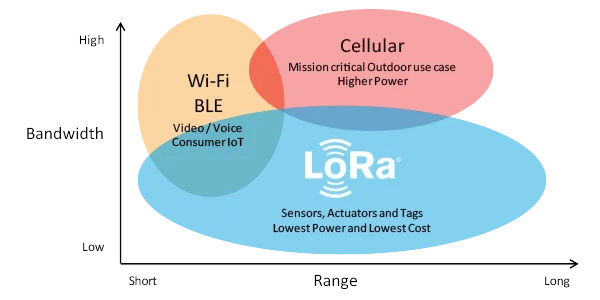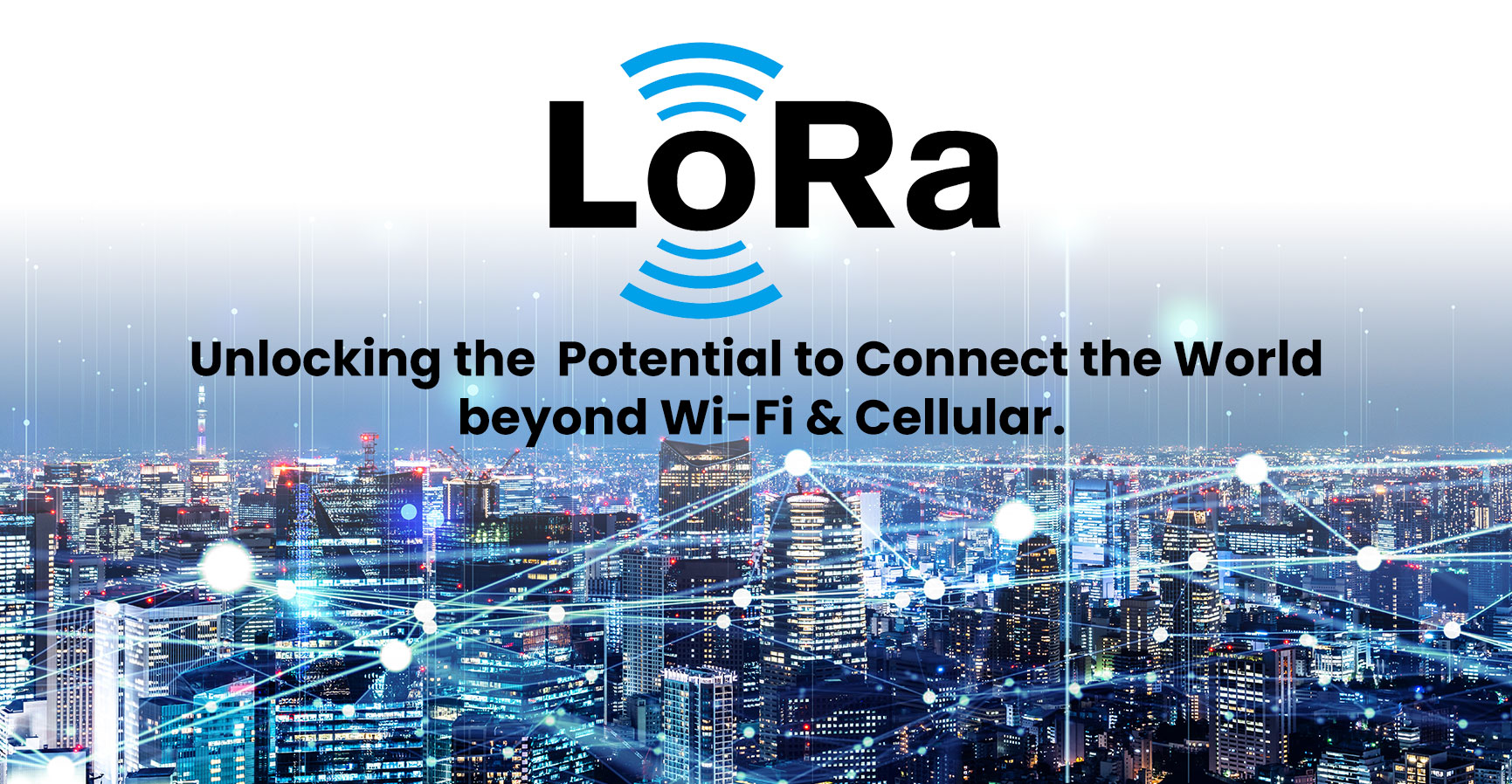In a world increasingly dependent on wireless communication, LoRa Technology has emerged as a game changer offering a unique solution that bridges the gap between short-range technologies like Wi-Fi and power-hungry cellular networks.
LoRa, or Long Range, is revolutionising the way we connect devices and gather data, providing the foundation for the Internet of Things (IoT) revolution.
In this blog we delve deep into the world of LoRa technology, exploring its fundamentals, applications, and potential impact on the future.
What is LoRa Technology?
Short for ‘Long Range’, it is a wireless communication technology designed for long-distance data transmission that uses a lower power consumption. Operating on the sub-gigahertz ISM (Industrial, Scientific, and Medical) radio bands it is renowned for its ability to transmit data over several kilometres, even in challenging environments.

How does is work?
LoRa achieves its impressive range by utilising a spread spectrum modulation technique.
Spreading data over a wide range of frequencies, allows it to maintain signal integrity even in the presence of interference or obstacles.
Devices can operate in different frequency bands, such as 169 MHz, 433 MHz, 868 MHz, or 915 MHz, depending on regional regulations.
Long Range vs. Traditional Wireless Technologies
LoRa technology sets itself apart from traditional wireless technologies like Wi-Fi and cellular in several ways:
Long Range: Solutions can cover much larger distances, making it ideal for applications in rural or remote areas.
Low Power: Devices are power-efficient and can operate on battery power for extended periods.
Low Cost: Hardware is cost-effective, making it accessible for a wide range of applications.
Applications of LoRA Technology
LoRa technology has found a home in a variety of applications, including:
Smart Agriculture: Farmers can use LoRa sensors to monitor soil conditions, weather data, and livestock.
Smart Cities: LoRa is used for smart lighting, waste management, and environmental monitoring.
Asset Tracking: Companies can track the location and status of their assets in real-time.
Industrial IoT: LoRa supports efficient industrial processes, predictive maintenance, and equipment monitoring.
Healthcare: LoRa-enabled devices help in remote patient monitoring and healthcare asset management.
LoRaWAN Enabling Scalability
LoRa technology is often used in conjunction with LoRaWAN, a Low-Power, Wide-Area Network protocol.
Providing the infrastructure and security needed for scalable IoT deployments, it enables devices to connect to the cloud, making data collection and analysis easier.

Challenges And Limitations
While LoRa technology offers many advantages, it’s not without challenges. Limited bandwidth and data rate may not be suitable for all applications.
Additionally, interference from other devices operating in the same frequency band can affect performance.
Real-World Success Stories
Numerous organisations have embraced LoRa technology to solve real-world problems.
Cities are using LoRa for waste management, reducing operational costs and environmental impact.
Agriculture is also benefiting from precision farming techniques enabled by LoRa sensors, improving crop yields and sustainability.
The Future of LoRa Technology
As IoT continues to grow, so does the potential for LoRa technology. The development of more sophisticated LoRa devices, enhanced network coverage, and advanced analytics will expand its applications even further. The ability to connect billions of devices with minimal power usage positions LoRa as a key player in the future of IoT.
Conclusion
LoRa technology is changing the way we connect and communicate in a world increasingly reliant on wireless solutions. Its long-range capabilities, low power consumption, and cost-effectiveness make it a versatile choice for a wide range of applications, from agriculture to smart cities. With the ongoing advancements in LoRa devices and network infrastructure, we can expect even more innovative solutions to emerge, connecting our world in ways we’ve never imagined. LoRa is not just a technology; it’s a gateway to the future of IoT.
For our range of antenna solutions – CLICK HERE

